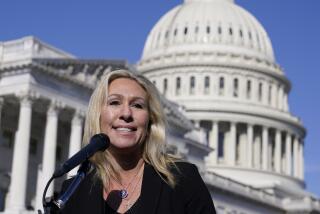Solyndra and the stimulus
When Solyndra, a Bay Area maker of industrial solar panels, announced plans to file for bankruptcy protection Wednesday, it wasn’t just a blow for the company’s 1,100 laid-off employees or the investors who have pumped millions into the venture. It called into question the Obama administration’s entire clean-energy stimulus program.
Solyndra was the first company to be awarded a federal loan guarantee under the stimulus, worth $535 million. Taxpayers are likely to end up on the hook for much if not all of that amount, a highly embarrassing development for President Obama because he was among the company’s biggest cheerleaders. He visited its Fremont plant in May 2010 even though PricewaterhouseCoopers had weeks earlier raised doubts about its plans for an initial public offering by questioning whether it could continue as a going concern.
That’s especially troubling because Solyndra is backed by one of Obama’s key fundraisers, George Kaiser of Tulsa. Congressional Republicans were raising alarms about Obama’s connections to Solyndra well before Wednesday’s announcement, with GOP members of the House Energy and Commerce Committee voting in July to subpoena documents from the Office of Management and Budget on the loan-guarantee decision.
Two important questions are raised by Solyndra’s failure: Should the government be in the business of picking winners and losers by providing loan guarantees to risky energy ventures? And is Obama using stimulus funds to reward his political contributors?
To the first, the answer is a qualified yes. Solar and wind projects aren’t the first to benefit from loan guarantees; Washington has been offering them to nuclear power plants for decades. Research and development of alternative forms of energy are expensive and often need more support than private investors are willing to provide, but such investment is worthwhile not only because it stimulates job growth during a downturn, but also because in an era of climate change and worldwide turmoil over oil and other fossil fuels, it’s in the national interest. Moreover, competing countries, notably China, are outspending the U.S. on clean-energy subsidies, and falling behind will only cede the future market to them. But that isn’t meant as an excuse for the Obama administration. If it failed to do due diligence on Solyndra, it deserves a political black eye.
To the second question, we’d like to see the results of the House energy committee’s investigation. Given that Obama promised to fund clean-energy ventures during the 2008 presidential campaign, it’s no surprise that green-energy venture capitalists such as Kaiser raised money for him, nor is it worrisome that many companies backed by those investors benefited from the stimulus. But if there’s evidence that political rather than business considerations played a role in funding decisions, Obama will have much to answer for.
More to Read
A cure for the common opinion
Get thought-provoking perspectives with our weekly newsletter.
You may occasionally receive promotional content from the Los Angeles Times.










